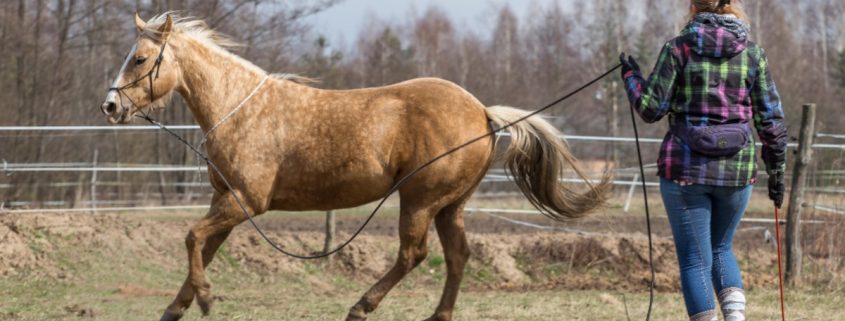Contrary to popular belief, there are multiple effective ways you can exercise your horse without getting in the saddle. Exercise can help your horse burn off energy, and keep their muscles toned and their weight in check. Knowing alternatives to riding that can still help your horse get a good workout will benefit them in the long run, as horses need daily exercise just like people do. So, here are a couple of alternatives for exercising your horse.
Hand Walking
Sometimes a change of setting is refreshing for both you and your horse, so consider incorporating hand walking into your horse’s exercise regimen. Hand walking provides a great opportunity to take your horse out into new settings and places, like nearby trails and new pastures. It’s also an ideal way to introduce young or inexperienced horses to elements that could spook them, while your presence on the ground beside them provides reassurance. Plus, both you and your horse will get some good exercise during these walks.
Lunging
Another great alternative to riding is lunging, which means working your horse around you in a circle. You can do this on a lunge line, which is a long rope that clips to your horse’s halter, or you can free lunge them in a round pen. This is when there’s no rope attached to your horse and you’re driving them around you with body language or vocal commands from the center of the ring.
Lunging is great for engaging with your horse’s muscles and mind. You can introduce new training techniques, teach your horse about personal space, and desensitize your horse, all while creating a deeper bond. It’s also a great way to warm your horse up and let them burn excess energy before a ride.
Loose schooling
Although loose schooling may provide an opportunity for your horse to blow off a little steam, it still involves an element of control! Though the horse is ‘free’ during loose schooling, they are directed around the arena in a controlled manner using the handler’s body language, voice commands, and in some cases, a lunging whip. It can be a great way of assessing your horse’s natural movement and can even include pole work or jumping. Keep in mind that loose schooling must always be done in an enclosed space. If you don’t have an indoor arena, it’s essential to make sure the area you’re schooling in has a high enough fence around it to deter your horse from jumping out.
Massages and Stretching
Believe it or not, when you get a massage, your muscles are actually experiencing anaerobic exercise, which relies on energy stored in your muscles rather than oxygen. In actuality, a massage is an intense workout for your muscles even though you don’t feel like you’re doing any work.
The same thing applies to a horse when they get a massage. Equine massage helps to work your horse’s muscles, increase muscle tone, and increase circulation. Massage is an excellent option for a horse that may need restricted movement due to injury or for horses experiencing soreness and stiffness in their bodies. Massage helps to loosen up the muscles and get them working back to their potential.
Your pets are our priority!
At the National Animal Supplement Council (NASC), our number one priority is to promote the health and wellbeing of your pets. That is why we created the NASC Audit Program and the Quality Seal, which helps you identify animal health and nutritional supplements that come from responsible suppliers committed to producing the highest quality, most consistent products available. Visit our website to learn more and to see a list of NASC members that have earned the Quality Seal.


